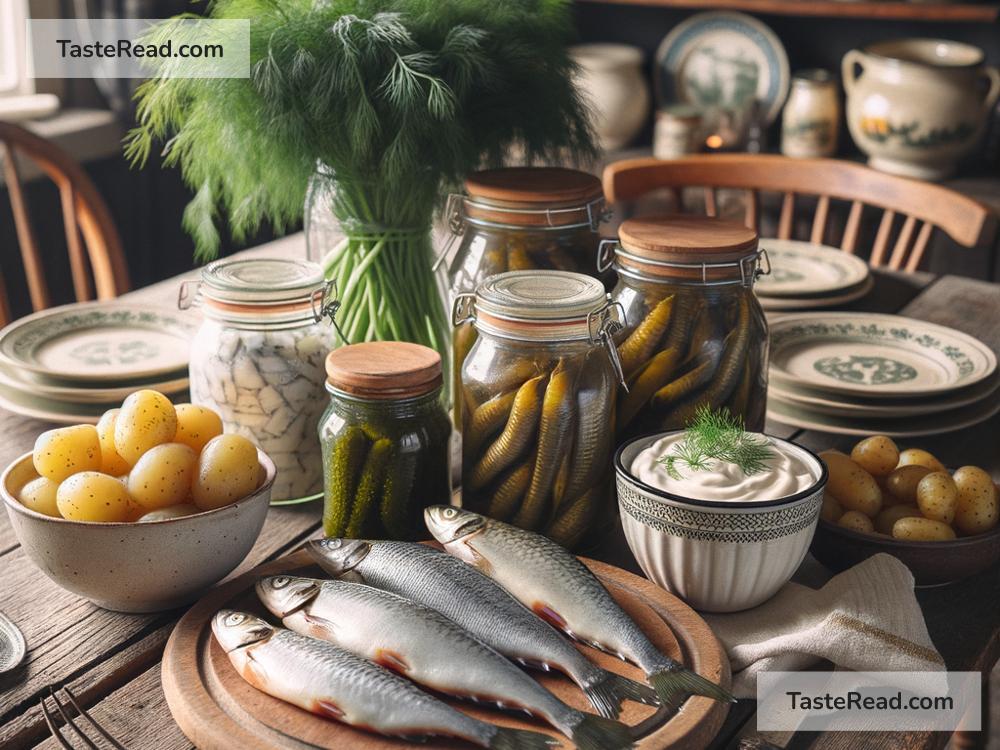The Fascinating Story of Dill in Scandinavian Cuisine
Scandinavian cuisine is known for its simplicity, fresh ingredients, and the way it celebrates nature’s flavors. From pickled herring to gravlax and creamy potato salads, Scandinavian dishes are deeply rooted in tradition, and one particular herb often stands out — dill. This humble green plant has played a significant role in Nordic kitchens for centuries, and its story is as flavorful as the dishes it enhances.
What Is Dill?
Dill is a delicate herb with feathery green leaves and a flavor that’s both fresh and slightly sweet. Native to regions around the Mediterranean and Southern Europe, dill eventually made its way to Scandinavia, where it thrived in the region’s cooler climate. Today, dill is one of the most-used herbs in Scandinavian cooking, often paired with fish, potatoes, and dairy-based sauces.
A Herb with History
While dill may seem like an ordinary herb to some, it has a long history. Ancient Egyptians used dill for medicinal purposes, and the Greeks employed it as a symbol of wealth. Vikings and medieval Scandinavians quickly adopted dill, not only for flavoring food but also for its practical uses. Dill was believed to help with digestion, and dill oil was used in remedies for stomach aches. It also served as a natural preservative, which was highly important in a time before refrigeration.
As food preservation became increasingly important in Scandinavia, especially during long winters and harsh weather conditions, dill played a key role in pickling. The herb’s distinct flavor complemented the vinegar brine used to preserve fish and vegetables, ensuring that food could last long after the harvest season. This connection to pickling cemented dill’s central place in Scandinavian food culture.
Dill and the Love of Seafood
Scandinavians have a deep appreciation for seafood, thanks to their long coastlines and proximity to rivers, lakes, and the sea. Here, dill truly shines. It’s a core ingredient in many traditional seafood dishes, especially those featuring salmon, herring, and shrimp.
One iconic example is gravlax, a dish made from cured salmon. The preparation involves rubbing the salmon with a mixture of salt, sugar, and plenty of fresh dill before letting it cure for a couple of days. The result is silky, flavorful fish that’s often served with mustard sauce and bread. Dill doesn’t just enhance the flavor of salmon—it also symbolizes a connection to the land and sea, both vital to Scandinavian culture and diet.
Dill is equally important in dishes like pickled herring, another staple of Scandinavian cuisine. Herring is pickled in brine with vinegar, sugar, onions, and spices, but the addition of dill brings everything together, creating a fresh taste that contrasts with the sharpness of the pickling liquid. Pickled herring is a dish often seen at holiday celebrations and can be enjoyed on rye bread with sour cream.
Dill Beyond Seafood
While dill pairs beautifully with seafood, it’s not limited to the ocean. Scandinavians also use dill to elevate simple, hearty ingredients such as potatoes and cucumbers. Potato salad with dill is a favorite dish served at summer gatherings, topped with sour cream, yogurt, or mayonnaise, and enhanced with the bright, grassy flavor of fresh dill.
Another refreshing dish that showcases dill is traditional cucumber salad. Thinly sliced cucumbers are marinated in sugar, vinegar, and dill to create a sweet yet tangy side dish that pairs perfectly with hearty meals like Swedish meatballs or roasted pork. Dill’s ability to bring balance and freshness to starchy or heavy dishes makes it indispensable.
Dill in Holiday Traditions
Dill is so much a part of Scandinavian food culture that it’s woven into their holiday traditions. During Midsummer celebrations, dill appears everywhere—whether it’s sprinkled over new potatoes fresh from the earth, stirred into creamy sauces for grilled fish, or used to garnish cold salads served during outdoor feasts.
Christmas and Easter meals also feature dill in various forms. Whether it’s a dill-spiked mustard sauce served with holiday ham in Finland or dill pickles accompanying heavy winter meals, this herb remains an essential part of special occasions.
A Modern Twist on Dill
While traditional Scandinavian recipes continue to highlight dill in classic ways, modern Nordic chefs are finding new, creative ways to use it. Dill-infused oils, syrups, and purees have made their way onto gourmet menus, transforming the herb from a straightforward flavoring into an ingredient with depth and versatility. It’s even used to flavor cocktails like aquavit, a traditional Scandinavian spirit, adding an herbal note to celebratory drinks.
Conclusion
Dill may seem simple, but its role in Scandinavian cuisine is anything but ordinary. From its historical roots in food preservation to its starring role in seafood dishes and holiday feasts, dill continues to be a beloved and essential herb throughout the Nordic region. Its fresh, vibrant flavor connects people to their culinary heritage and the natural world, which is central to Scandinavian culture. The next time you garnish a dish with dill, take a moment to appreciate the fascinating history and tradition tied to this flavorful little herb. Scandinavian cuisine wouldn’t be the same without it.


